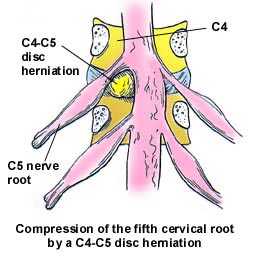What are spinal stenosis symptoms?
Симптомы этого сужения позвоночного канала часто начинаются как периодическую боль, которая постепенно начинает задерживаться дольше. Первоначально, это острый, но низкого уровня боли, может произойти только тогда, когда позвоночник искривлен или изогнутые вперед или назад и в начале позвоночника симптомы стеноза часто освобожден лежа, сидящий, или сгибание вперед.
Read more here: спинальные симптомы стеноза
Should I get a second opinion?
Definitely. If you’d like a second opinion about your spine condition and would like assistance deciding who to contact.
Send us your information and we will call or email you back: 2nd opinion assistance
How much is spinal stenosis surgery?
It depends on what type of surgery is being suggested by your surgeon. Factors include:
- Number of levels that need repaired
- How many sides (left, right, bilateral?)
- How severe spinal stenosis
- Type of insurance or payment method
See cash prices for spinal stenosis surgery here: spinal stenosis surgery prices
Стеноз позвоночного канала
The term ‘stenosis’ means narrowing of a tubular structure in the body. Стеноз, then, means narrowing is in the spinal column, which houses the vertebrae, spinal cord, spinal discs, nerves and other tissues. Stenosis can occur as a result of trauma, inflammation, tissue degeneration, Опухоли, and for other reasons, and at a certain point the narrowing can cause pinched nerves, spinal cord compression and other adverse effects.
Стеноз позвоночного канала Симптомы
Not all spinal stenosis is symptomatic. In fact, many people have some degree of stenosis but remain unaware of this unless they have an X-ray or other imaging taken of the spine which reveals asymptomatic narrowing.
When symptoms of spinal stenosis do occur they can be acute, chronic, transient, and variable in nature. Such symptoms may include persistent back pain, боль в шее, pain in the buttocks and pain down the backs of the legs into the feet. People with spinal stenosis may develop a limp, may trip over their own feet due to a loss of sensation and motor control in the legs, and may begin to engage in less and less physical activity. Spinal stenosis symptoms can also include paraesthesia, or pins and needles, as well as sensations of heat and cold, due to abnormal nerve conductivity.
Over time, nerve compression can lead to muscle atrophy due to reduced movement of the limbs. Stenosis in the spine may even cause breathing difficulties, changes in posture, bowel and bladder incontinence, erectile dysfunction and a range of other issues.
Living with Spinal Stenosis
Spinal stenosis is a serious health issue that affects many millions of people in a variety of ways. Without appropriate treatment, spinal stenosis can lead to permanent nerve damage, paralysis and even death. When spinal canal narrowing is causing spinal cord compression this needs treating right away to decompress the spine and reduce the likelihood of significant and intractable damage.
Spinal Stenosis Causes
Stenosis can occur in any of the regions of the spine, although lumbar spinal stenosis is most common due to the mobility of this region of the back. Cervical spinal stenosis is also common, but thoracic stenosis is relatively rare as the middle segments of the spine are less mobile and, поэтому, less subject to wear and tear.
Disease such as arthritis, osteoporosis, osteopenia, ankylosing spondylitis, and degenerative disc disease can all be contributing factors to spinal stenosis, requiring appropriate treatment to relieve symptoms and prevent further degeneration of the spine.
Стеноз позвоночного канала – An Ever Increasing Problem
Spinal stenosis has been described as a silent epidemic and, as the population ages, the spread of this condition is increasing. Lumbar spinal stenosis is actually the most common reason for surgery in people over the age of 60 in the United States, with almost half a million people in the US suffering from lumbar spinal stenosis and many more experiencing cervical spinal stenosis.
By 2050, it is estimated that there will be nearly 2 billion people aged 60 and over (United Nations Population Division, Department of Economic and Social Affairs), meaning that it is crucial to find new and innovative ways to prevent, diagnose, and treat spinal stenosis and other musculoskeletal conditions that disproportionately affect older adults.
Spinal stenosis can significantly affect quality of life, making it difficult to work, exercise, socialise and even to care for family, friends or one’s own needs. SpinalStenosis.org is intended to help spread awareness of this difficult condition and to provide evidence-based information to those who need it, be they newly diagnosed with spinal stenosis, a long-time sufferer of spinal stenosis, or someone who is simply curious about maintaining spinal health throughout life.
While every effort has been made to provide balanced, factual information, a visit to this site is not an acceptable substitute for a professional medical consultation. Furthermore, while it is advisable to become active in the learning and decision making process regarding your own health care, none of the treatment modalities discussed within this site are recommended without the advice of a state licensed health care practitioner.
